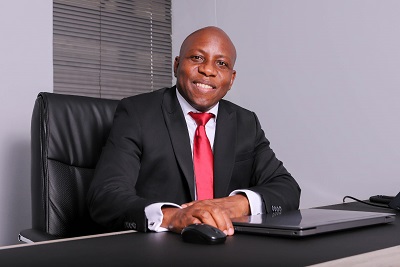

MD Genesis Corporate Solutions
One of the most common business rhetoric’s that I have encountered following the Covid-19 Pandemic is that companies are either increasing their agility or are reinventing themselves. This is being driven by the new operating environment that has been created by the Pandemic which in turn is being driven by shifting consumer demand. How do we approach business reinvention to increase agility?
But are companies paying lip-service to this rhetoric or are they genuinely invested in change management? The most recent edition of the PwC CEO Survey indicates that 40% of global CEOs think their organisation will no longer be economically viable in ten years’ time, if it continues on its current course. Therefore, 4 410 CEOs are in the process of developing systems whereby they can measure their progress when it comes to changing their business.
What is the half-life of your business?
The survey points out that CEOs recognise the potential for disruption ahead. The 40% pattern mentioned earlier is consistent across a range of economic sectors, including technology (41%), telecommunications (46%), healthcare (42%) and manufacturing (43%).
When asked about the forces most likely to impact their industry’s profitability over the next ten years, about half or more of surveyed CEOs cited changing customer preferences, regulatory change, skills shortages and technology disruption. Roughly 40% flagged the transition to new energy sources and supply chain disruption. And nearly one-third pointed to the potential for new entrants from adjacent industries. Is business reinvention a disruptive force?
The survey asked a question: To what extent do you believe the following will impact (i.e., either increase or decrease) profitability in your industry over the next 10 years? The answer was insightful.
Changing consumer demands and preferences will impact profitability by 56%, changes in regulation will impact profitability by 53%, labour/skills shortages will impact profitability by 52%, and technology disruptors will impact profitability by 49%.
The survey points out that underlying these figures is consciousness among today’s leaders that we are living through extraordinary times, with five broad megatrends—climate change, technological disruption, demographic shifts, a fracturing world and social instability—reshaping the business environment. Although none of these forces is new, their scope, impact and interdependence are growing, with varied magnitude across industries and geographies. CEOs in Japan (who have been buffeted by demographic headwinds for decades) and China (who are on the front lines of uncertainties about free-flowing global trade) were the most concerned about the long-term viability of their business models, while CEOs in the United States were the most optimistic.
Your next moves: reimagine and choose. I have often said that the starting point for enterprise transformation is a reimagination of a company’s place in the world. This involves looking beyond the current portfolio of businesses and products to determine what value an organisation will create, and for whom. Such reimagination often involves hard choices about what not to do.

Image By: StartupStockPhotos from Pixabay
Should you bring your key business risks forward?
The survey points out that climate change exemplifies a time-horizon challenge that comes into clearer focus when we look at a broader set of external threats to the global economy. Over the next 12 months, CEOs feel most exposed financially to inflation, economic volatility and geopolitical risk. All three are immediate, headline-grabbing issues that can reinforce and compound one another, as, for example, the war in Ukraine pushes up prices, encouraging central banks worldwide to intervene through growth-dampening interest rate hikes. The picture changes for CEOs’ medium-term (five-year) outlook. Over that time frame, cyber risks and climate change join inflation, macroeconomic volatility and geopolitical conflict in the top tier of risk exposure. How does business reinvestion impact your risk managment or business reinvention?
Climate change exemplifies a time-horizon challenge that comes into clearer focus when we look at a broader set of external threats to the global economy. Over the next 12 months, CEOs feel most exposed financially to inflation, economic volatility and geopolitical risk. All three are immediate, headline-grabbing issues that can reinforce and compound one another, as, for example, the war in Ukraine pushes up prices, encouraging central banks worldwide to intervene through growth-dampening interest rate hikes. The picture changes for CEOs’ medium-term (five-year) outlook. Over that time frame, cyber risks and climate change join inflation, macroeconomic volatility and geopolitical conflict in the top tier of risk exposure. The survey asked respondents the following question: how exposed do you believe your company will be to the following key threats in the next 12 months and the next 5 years? Does business reinvention rank amoung them?
Here was the response for the next 12 months:
- inflation 40%;
- macroeconomic volatility 31%;
- geopolitical conflict 25%;
- cyber risks 20%;
- health risks 14%;
- climate change 14%; and
- social inequality 6%.
Here was the response for the next 5 years:
- macroeconomic volatility 29%;
- inflation 28%;
- geopolitical conflict 25%;
- cyber risks 25%;
- climate change 22%
- health risks 13%; and
- social inequality 9%.
The survey points out that the disconnect across time horizons begs the question of whether CEOs run the risk of being blindsided in the near term as they focus on here-and-now threats. In the case of cybersecurity, it’s easy for important business technology investments—launching a new consumer-facing app, developing a business line built around AI, expanding into a new market—to inadvertently create cyber vulnerabilities.
Your next move: mobilise the C-suite. The Survey is right in that CEOs have an important role to play to stay ahead of cyber challenges, ranging from speaking publicly about their commitment to cybersecurity, to using their influence to inspire sweeping changes, and creating a united front against attacks. However, the CEO needs to engage with the company’s CFO, COO and Chief Transformation Officer to effectively drive change management. Mobalise the C-suite towards reinvention.
How much is your mood today affecting your view of tomorrow?
The Survey points out that the biggest near-term challenge facing CEOs, of course, is the state of the global economy. Not surprisingly, nearly three-quarters of CEOs responding to this year’s survey project that global economic growth will decline over the next 12 months. Those expectations, which held across all major economies, represented a stark reversal from last year, when a similar proportion (77%) anticipated improvement in global growth. Last year’s optimism, reflecting hope that economic conditions would continue improving as the global pandemic eased, was dashed in 2022 by shocks such as Europe’s largest land war since World War II, knock-on effects like surging energy and commodity prices, and accelerating general wage and price inflation. Business reinvention is key when it comes to this.

Image By: Photo Mix from Pixabay
CEOs are extremely pessimistic about global economic growth for the year ahead, in a dramatic shift from last year’s optimistic outlook.
The Survey points out that we can dimensionalise CEOs’ pessimism by comparing their confidence in their own company’s growth prospects (as opposed to the overall economy’s) over the next 12 months. This is a question we have been asking CEOs since 2007. The drop-off in CEO confidence levels for their own organisation’s prospects between last year and this year (about 25%) was significantly smaller than the plunge in 2009 (when it fell more than 50%), but larger than in any other of the past 15 years. There were exceptions: CEOs in Africa, Brazil, China, Japan and the Middle East are about as confident in their growth prospects as they were last year—and, in general, CEOs are more confident about their three-year revenue growth prospects compared to the shorter term, which we also asked them about. Still, the near-term revenue outlook is weak, particularly for CEOs in the real estate and private equity industries, who are feeling the effects of rising capital costs and tightening liquidity conditions. CEOs cannot be pessamistic about business reinvention.
The dramatic, year-on-year shift in CEO sentiment begs a natural question: has inordinate optimism a year ago been replaced by excessive pessimism? After all, CEOs are people, too, and just as susceptible as the rest of us to recency effects and other cognitive biases that a vast body of behavioural economics research has shown to be pervasive in individuals.
A complete ecosystem
The biggest takeaway from this article is that the C-suite needs to work in harmony to address the company’s risks. Working in silos do more damage to a financially distressed organisation than good.
Early intervention is key. Highlighting these risks from the start of your distress is important. The CTO can then sit with the COO and plan the company’s response to these challenges. The role of turnaround professionals in advising CTO’s will increase going forward. We have an important role to play in the response to these challenges. equally, business reinvention is important.
Phahlani Mkhombo is the MD of Genesis Corporate Solutions and is a Senior Business Rescue Practitioner.




